|
When COVID-19 swept through the United States, 26% of Lebanon County households were already one emergency away from a financial crisis. The United Way refers to these households as ALICE: Asset-Limited, Income-Constrained, Employed. ALICE families have income above the Federal Poverty Level, but struggle to meet the bare minimum cost of basic household needs. They do not qualify for assistance, but still struggle to meet basic costs such as housing, transportation, child care and health care. When combined with Lebanon County households in poverty, a staggering 37% are living below the ALICE threshold – and that number is 39% throughout Pennsylvania. COVID-19 has exasperated the issue as the number of households struggling to survive is only expected to increase as the pandemic continues. The United Way surveyed 1,700 people in Pennsylvania and asked how their households have been impacted by the COVID-19 pandemic. Here are 5 things to know about COVID-19’s impact on Pennsylvania’s households below the ALICE threshold. 1. Households below the ALICE threshold were vulnerable before the pandemic.77 percent of respondents with household income below the ALICE threshold had one month or less in savings to cover basic household bills. Respondents were asked, prior to March 1, 2020, how long could they could cover basic bills from savings. Of the 77 percent who had one month or less in savings, 31 percent of those had one week or less. Additionally, 70 percent of respondents below the ALICE threshold indicated changes in employment due to the pandemic, which include job loss, being temporarily laid off and changing jobs. 2. Households below the ALICE threshold are more concerned about housing expenses than contracting COVID-19.44 percent of ALICE households report their top concern during the pandemic is paying for housing, while 44 percent of households above the ALICE threshold are most concerned with contracting COVID-19. Other top concerns include child care and remote learning, and mental health. 3. ALICE households are struggling to survive and are seeking help.52 percent of respondents with household income below the ALICE threshold applied for unemployment, 43 percent received food from a food pantry or food bank, 37 percent borrowed money from friends and family to make ends meet, 36 percent applied for government assistance programs, and 23 percent increased credit card balance. 4. Child care is essential for working families; most households do not have adequate support to balance work and their children’s needs.Of the total households with children, over half have adjusted their work to accommodate their family’s need for child care. And 64 percent of respondents with households below the ALICE threshold report either reducing their hours or leaving their job. The top reported child care concerns and issues for families are: helping children with distance learning (52%), juggling work and children needs (50%) and the health risk for children and household members (36%). 5. Food insecurity is prominent in households below the ALICE threshold.43 percent of respondents with households below the ALICE threshold report utilizing food banks or pantries compared to 15 percent of households above the ALICE threshold. Respondents with households below the ALICE threshold report being unable to afford food at a rate of 58%, almost three times that of households above the ALICE threshold. Other notable findings include:
0 Comments
Leave a Reply. |
Lebanon County Christian MinistriesArchives
July 2024
Categories |
Call Us:
Email Us:

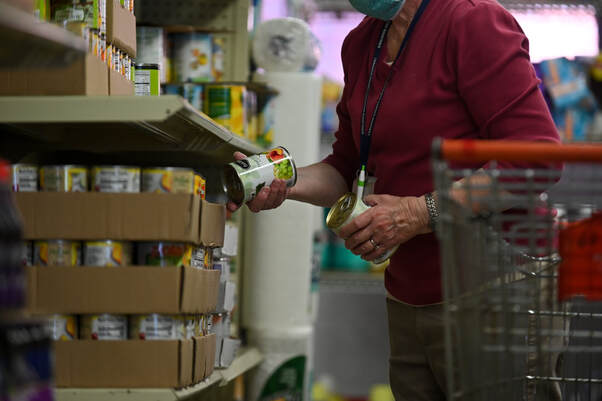
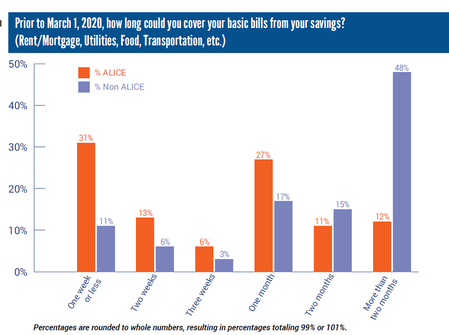
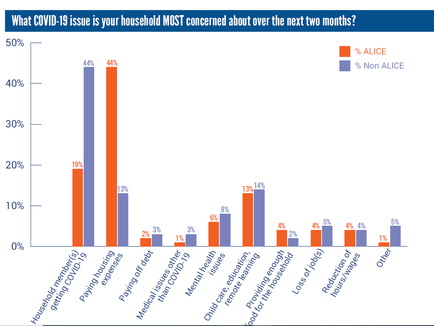
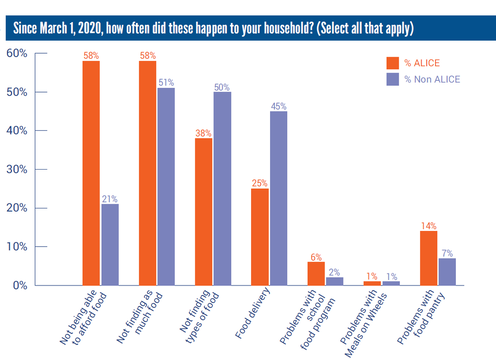
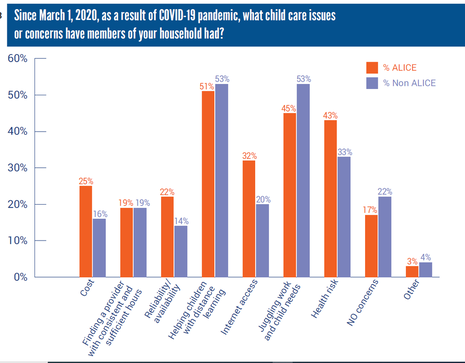
 RSS Feed
RSS Feed